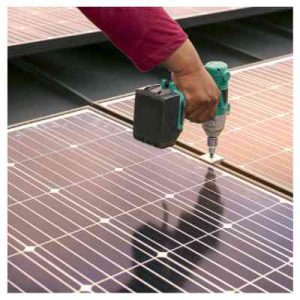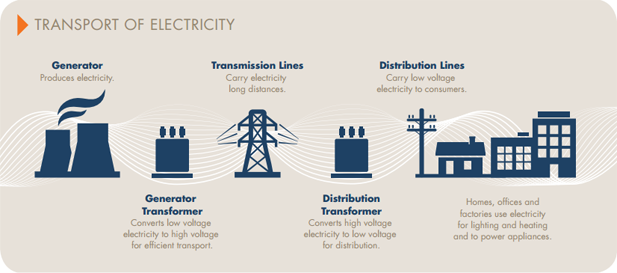Solar system size limits: How much does your local network allow in QLD?
Solar energy is a popular choice for many Queenslanders.
But did you know there are size limits for solar systems in QLD?
These limits are set by local electricity networks. They ensure safety, network stability, and efficiency.
Determining the maximum solar panel capacity for your roof involves several factors, including the size of your roof, your energy-saving objectives, and any restrictions set by your local electricity network provider. This discussion encompasses all these elements, with a primary focus on how grid operators manage systems exceeding specific sizes.
Whether you’re a homeowner, business owner, or property developer, understanding these limits is crucial. It can affect your solar installation, eligibility for the feed-in tariff, and your energy savings.
In this article, we’ll explore the solar system size limits in QLD. We’ll also discuss how these limits can impact your return on investment.
Stay tuned to make the most of your solar journey in Queensland.
Here are some concise notes on solar system sizing:
A 6.6 kilowatt (kW) system is currently the most popular size.
When considering solar for your home, or expanding your current system, it’s crucial to determine the optimal size for your needs. We have detailed guides on this subject (see resources below), but generally, a 6.6kW solar system is cost-effective and complies with most of Australia’s network rules for easy approval and eligibility for feed-in tariffs. Such a system typically generates ample energy, often enough to charge a battery bank should you decide to add one later.
Even without a battery, surplus solar energy not used immediately in your home can earn you credits through solar feed-in tariffs on your electricity bill, so having a system that produces more energy than you use is not problematic.
Resources for choosing the correct solar and battery system size include:
– Understanding kilowatts vs kilowatt-hours: Power, energy, and capacity in solar and batteries
– Solar Choice Solar Payback & ROI Calculator (important for financial considerations)
– Guides on selecting the right size for a solar PV system
– Quick tips on solar and battery system sizing
– Comparisons between 5kW and 3kW solar systems for better investment decisions
– Solar Choice’s estimator for solar and battery sizing and payback calculations
– Explanations on the limitations of grid-connected system sizes
Size limits are generally governed by the new AS/NSZ 4777 standard, which most networks adhere to, allowing for the following system sizes:
– Single-phase connection (typical in homes): Up to 5 kilowatts (5kW or sometimes referred to as 5kVA)
– Three-phase connection (found in some homes and many businesses): Up to 30kW (30kVA)
Most networks operate a ‘pre-approval’ process, automatically approving connections that meet specific criteria, including system size/capacity, although these criteria can vary between networks.
The size limits set by networks are not absolute. Larger systems may be approved for your property, but this often involves more bureaucracy, extended waiting periods, and potentially additional fees.
Size limitations also affect eligibility for solar feed-in tariffs. Systems exceeding a certain size might be installed but not allowed to export energy back to the grid, disqualifying them from feed-in tariff benefits. Consequently, households should aim to ‘self-consume’ as much solar energy as possible to avoid waste. Occasionally, the feed-in tariff threshold is determined by the electricity retailer, not the network.
How electricity is transported. (Image via AEMO. Click to enlarge.)
The Role of Electricity Distributors in QLD
Electricity distributors play a key role in setting solar system size limits in QLD.
They are responsible for maintaining the safety and stability of the local electricity network.
This includes setting rules for solar system installations, such as size limits and approval processes.
Energex and Ergon Energy: What You Need to Know
Energex and Ergon Energy are two of the main electricity distributors in QLD.Solar PV | Energex,Ergon Energy
They each have their own rules and guidelines for solar system installations.
It’s important to check with your distributor to understand the specific size limits and requirements for your area.
Feed-in Tariffs and System Size: Finding the Balance
Feed-in tariffs (FiTs) are a key factor to consider when planning a solar system installation in QLD.
These tariffs are credits that customers receive for exporting excess solar energy back to the grid.
However, the size of your solar system can affect your eligibility for the feed-in tariff.
Here are a few points to keep in mind:
- FiT rates can vary by retailer and may be subject to change.
- Larger systems may receive a lower FiT rate or may not be eligible at all.
- Understanding the size limits can help maximize return on investment for solar installations.
How System Size Affects FiT Eligibility
The size of your solar system directly impacts your FiT eligibility.
Larger systems may produce more energy than can be exported back to the grid.
As a result, these systems may receive a lower FiT rate or may not be eligible for a feed-in tariff at all.
Applying for Larger Solar Systems: The Approval Process
If you’re considering a larger solar system, you’ll need to navigate the approval process.
This process involves submitting an application to your local electricity distributor.
It’s crucial to understand the specific requirements and guidelines for your area.
Necessary Paperwork and Grid Protection Equipment
The approval process often requires specific paperwork.
You may also need to install grid protection equipment for systems exceeding a certain threshold.
Maximizing Your Solar Investment in QLD
Understanding the solar system size limits in QLD is key to maximizing your solar investment.
The right system size can optimize your energy savings and return on investment.
Remember, exceeding the size limit without proper approval can lead to fines or disconnection from the grid.
Choosing the Right Size for Your Energy Needs
Choosing the right solar system size for your energy needs is crucial.
A system that’s too small may not meet your energy needs, while a system that’s too large may not be cost-effective.
Consult with a qualified solar installer to determine the best system size for your needs.
Rules may vary, so it’s important to ask questions. The specific implementation of these rules can differ from one network to another and even within different areas of the same network. This variation leads to several key questions that should be asked. You can contact your local network company, your electricity retailer, or discuss with installers to understand your options.
Key questions include:
– Does the limit apply solely to solar inverter capacity, or does it include battery inverter capacity as well?
Modern grid-connected solar systems automatically export surplus solar energy to the grid. However, battery systems with dedicated inverters are not primarily designed for this purpose. Consequently, some networks may not include battery inverter capacity in the maximum size limit, although most do.
– Is the installation of export limiting or export control technology on your system required? What about solar smoothing?
Network issues with grid-connected systems often stem from solar energy entering the grid and disrupting the local network’s electricity quality. A common solution is the implementation of export limiting functionality, which restricts your system from exporting solar energy beyond a certain threshold (e.g., a 3kW limit for a 5kW system), or in some cases, completely prevents export. This control can be achieved with certain inverters or additional third-party equipment designed for this purpose, sometimes referred to as grid protection.
Conclusion and Next Steps
Understanding the solar system size limits in QLD is crucial for maximizing your solar investment.
Stay updated on policy changes and consult with a qualified solar installer to make informed decisions.
Quick Summary of Key Points
Solar system size limits in QLD are influenced by the capacity of the local electricity network and the type of connection.
Choosing the right system size can optimize your energy savings and return on investment.
Please take a look at the Solar and battery Packages we offer: https://djsolar.com.au/solar-panels-solar-energy-systems-installer-brisbane/





